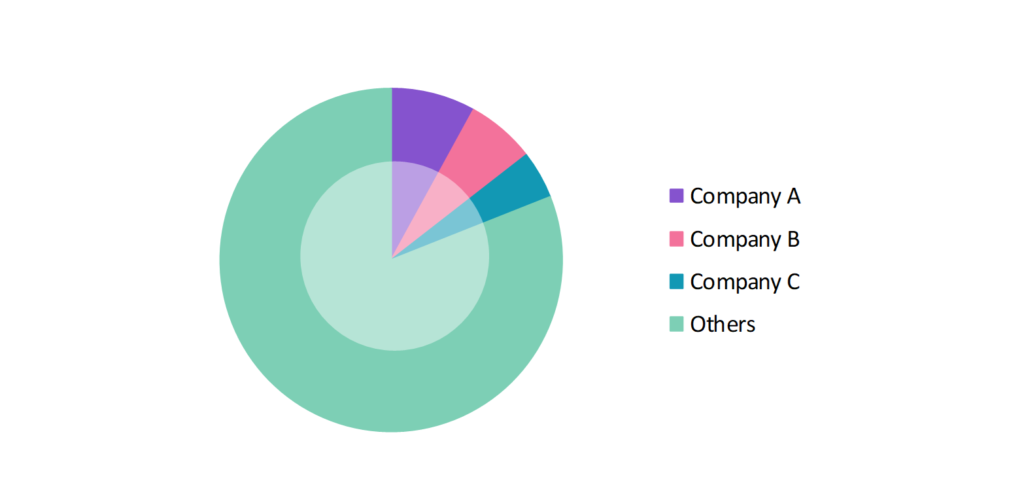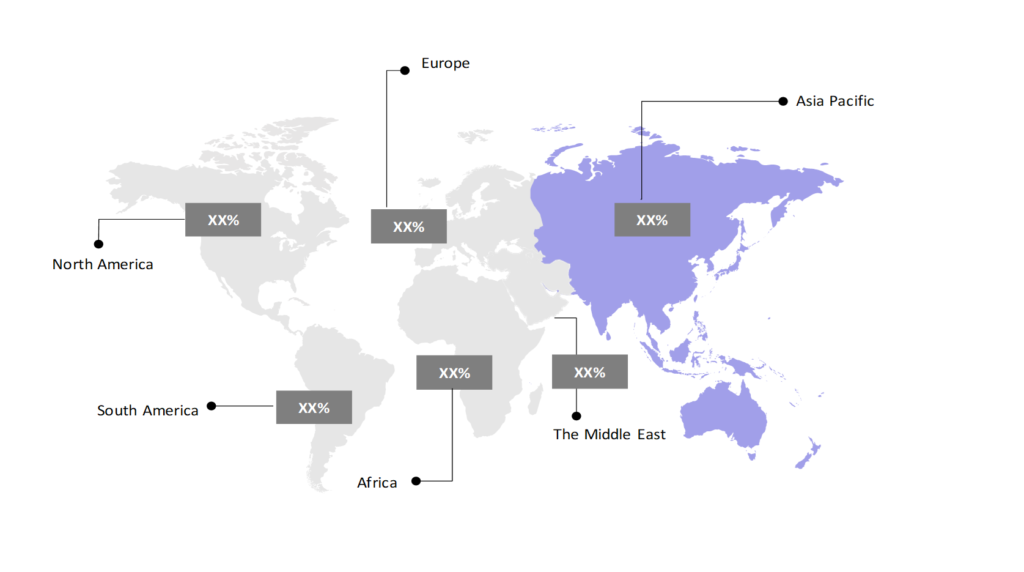Waterborne Coatings Market Analysis: Growth, Size, Share & Future Trends (2024-2029)
The market report offers a detailed analysis segmented by Type (Acrylic, Polyester, Alkyd, Epoxy, Polyurethane, Others); by Application Industry (Architectural, Industrial); by Geography (North America, South America, Asia Pacific, Europe, The Middle East, Africa).
Outlook

- The waterborne coatings market is estimated to be at USD 95.51 Bn in 2024 and is anticipated to reach USD 122.92 Bn in 2029.
- The waterborne coatings market is registering a CAGR of 5.18% during the forecast period of 2024-2029.
- The global waterborne coatings market is witnessing significant growth due to the rising demand for environmentally friendly coatings. Waterborne coatings use water as a solvent, reducing volatile organic compounds (VOC) emissions and aligning with stringent environmental regulations.
Request a free sample.
Ecosystem

- The participants in the global waterborne coatings industry are always developing their strategies to preserve a competitive advantage.
- These companies focus on continuous innovations, low-VOC and zero-VOC coatings, research & development, and significant investments in waterborne technologies to meet global environmental standards.
- Several important entities in the waterborne coatings market include PPG Industries, Inc.; BASF SE; Akzo Nobel N.V.; Nippon Paint Holdings Co., Ltd.; Asian Paints Ltd.; and others.
Ask for customization.
Findings
| Attributes | Values |
|---|---|
| Historical Period | 2018-2022 |
| Base Year | 2023 |
| Forecast Period | 2024-2029 |
| Market Size (2024) | USD 95.51 Bn |
| Market Size (2029) | USD 122.92 Bn |
| Growth Rate | 5.18% CAGR from 2024 to 2029 |
| Key Segments | Type (Acrylic, Polyester, Alkyd, Epoxy, Polyurethane, Others); Application Industry (Architectural, Industrial); Geography (North America, South America, Asia Pacific, Europe, The Middle East, Africa) |
| Key Vendors | PPG Industries, Inc.; BASF SE; Akzo Nobel N.V.; Nippon Paint Holdings Co., Ltd.; Asian Paints Ltd. |
| Key Countries | The US; Canada; Mexico; Brazil; Argentina; Colombia; Chile; China; India; Japan; South Korea; The UK; Germany; Italy; France; Spain; Turkey; UAE; Saudi Arabia; Egypt; South Africa |
| Largest Market | Asia Pacific |
Get a free quote.
Trends
- Shift Towards Eco-Friendly Coatings: There is an increasing shift towards eco-friendly coatings, driven by stricter environmental regulations and growing consumer preferences for sustainable products. Eco-friendly coatings often utilize innovative materials such as water-based formulations, bio-based resins, and non-toxic pigments. These alternatives are designed to be less harmful during application and disposal, and they reduce overall environmental impact.
- Technological Advancements in Formulation: Innovations in waterborne coating formulations, such as improvements in drying times, durability, and application methods, are enhancing their performance. These advancements make them suitable for a wider range of industries, including automotive and aerospace, where high-performance coatings are critical. For example, advancements in acrylic and polyurethane resins have expanded the application of waterborne coatings.
- Focus on Low-VOC Formulations: With growing awareness of the harmful effects of volatile organic compounds (VOCs) on human health and the environment, manufacturers are increasingly focusing on developing low-VOC and zero-VOC waterborne coatings. These formulations aim to minimize the emission of toxic substances during application and curing, improving indoor air quality and reducing ecological impact.
Speak to analyst.
Catalysts
- Rise in Construction and Infrastructure Projects: The surge in global construction activities, especially in developing regions, boosts the demand for coatings used in buildings and infrastructure. Waterborne coatings are increasingly used for both aesthetic and protective purposes in residential and commercial constructions due to their environmentally friendly nature.
- Growing Awareness of Health Benefits: Increasing awareness of the health risks associated with solvent-based coatings, which release harmful VOCs, is driving demand for waterborne coatings. These coatings are considered safer for workers and residents, as they emit fewer toxic fumes, making them a preferred choice for indoor applications such as residential and commercial buildings.
- Stringent Environmental Regulations: Governments worldwide are implementing strict environmental regulations to reduce air pollution caused by solvent-based coatings. These regulations, such as the U.S. Environmental Protection Agency (EPA) guidelines and EU directives, are pushing industries towards adopting waterborne coatings with lower VOC content.
Inquire before buying.
Restraints
- High Humidity Sensitivity: Waterborne coatings are sensitive to humidity during application, affecting their drying times and final finish. For example, in coastal regions where humidity levels are consistently high, such as in Miami or Seattle, applying waterborne coatings leads to extended drying times and potential issues with the final appearance. This makes them less suitable in such climates, challenging manufacturers to optimize formulations that can perform consistently across different environments.
- Limited Application in Specific Industries: Some industries, such as heavy-duty protective coatings for marine or industrial equipment, still prefer solvent-based coatings due to their superior durability and resistance to harsh conditions. Broadening the use of waterborne coatings in these demanding fields continues to pose a challenge.
- Longer Drying Times Compared to Solvent-Based Coatings: Waterborne coatings often have longer drying times compared to solvent-based alternatives, which can impact the speed of production processes. This extended drying period can delay subsequent coating applications or finishing steps, potentially slowing down overall project timelines and increasing labor costs.
Personalize this research.
Hotspot

Explore purchase options.
Table of Contents
| 1. Introduction 1.1. Research Methodology 1.2. Scope of the Study 2. Market Overview / Executive Summary 2.1. Global Waterborne Coatings Market (2018 – 2022) 2.2. Global Waterborne Coatings Market (2023 – 2029) 3. Market Segmentation 3.1. Global Waterborne Coatings Market by Type 3.1.1. Acrylic 3.1.2. Polyester 3.1.3. Alkyd 3.1.4. Epoxy 3.1.5. Polyurethane 3.1.6. Others 3.2. Global Waterborne Coatings Market by Application Industry 3.2.1. Architectural 3.2.2. Industrial 4. Regional Segmentation 4.1. North America 4.1.1. The US 4.1.2. Canada 4.1.3. Mexico 4.2. South America 4.2.1. Brazil 4.2.2. Argentina 4.2.3. Colombia 4.2.4. Chile 4.2.5. Rest of South America 4.3. Asia Pacific 4.3.1. China 4.3.2. India 4.3.3. Japan 4.3.4. South Korea 4.3.5. Rest of Asia Pacific 4.4. Europe 4.4.1. The UK 4.4.2. Germany 4.4.3. Italy 4.4.4. France 4.4.5. Spain 4.4.6. Rest of Europe 4.5. The Middle East 4.5.1. Turkey 4.5.2. UAE 4.5.3. Saudi Arabia 4.5.4. Rest of the Middle East 4.6. Africa 4.6.1. Egypt 4.6.2. South Africa 4.6.3. Rest of Africa 5. Value Chain Analysis of the Global Waterborne Coatings Market 6. Porter Five Forces Analysis 6.1. Threats of New Entrants 6.2. Threats of Substitutes 6.3. Bargaining Power of Buyers 6.4. Bargaining Power of Suppliers 6.5. Competition in the Industry 7. Trends, Drivers and Challenges Analysis 7.1. Market Trends 7.1.1. Market Trend 1 7.1.2. Market Trend 2 7.1.3. Market Trend 3 7.2. Market Drivers 7.2.1. Market Driver 1 7.2.2. Market Driver 2 7.2.3. Market Driver 3 7.3. Market Challenges 7.3.1. Market Challenge 1 7.3.2. Market Challenge 2 7.3.3. Market Challenge 3 8. Opportunities Analysis 8.1. Market Opportunity 1 8.2. Market Opportunity 2 8.3. Market Opportunity 3 9. Competitive Landscape 9.1. PPG Industries, Inc. 9.2. BASF SE 9.3. Akzo Nobel N.V. 9.4. Nippon Paint Holdings Co., Ltd. 9.5. Asian Paints Ltd. 9.6. Company 6 9.7. Company 7 9.8. Company 8 9.9. Company 9 9.10. Company 10 |
Know the research methodology.
Waterborne Coatings Market – FAQs
1. What is the current size of the waterborne coatings market?
Ans. In 2024, the waterborne coatings market size is USD 95.51 Bn.
2. Who are the major vendors in the waterborne coatings market?
Ans. The major vendors in the waterborne coatings market are PPG Industries, Inc.; BASF SE; Akzo Nobel N.V.; Nippon Paint Holdings Co., Ltd.; Asian Paints Ltd.
3. Which segments are covered under the waterborne coatings market segments analysis?
Ans. The waterborne coatings market report offers in-depth insights into Type, Application Industry, and Geography.
